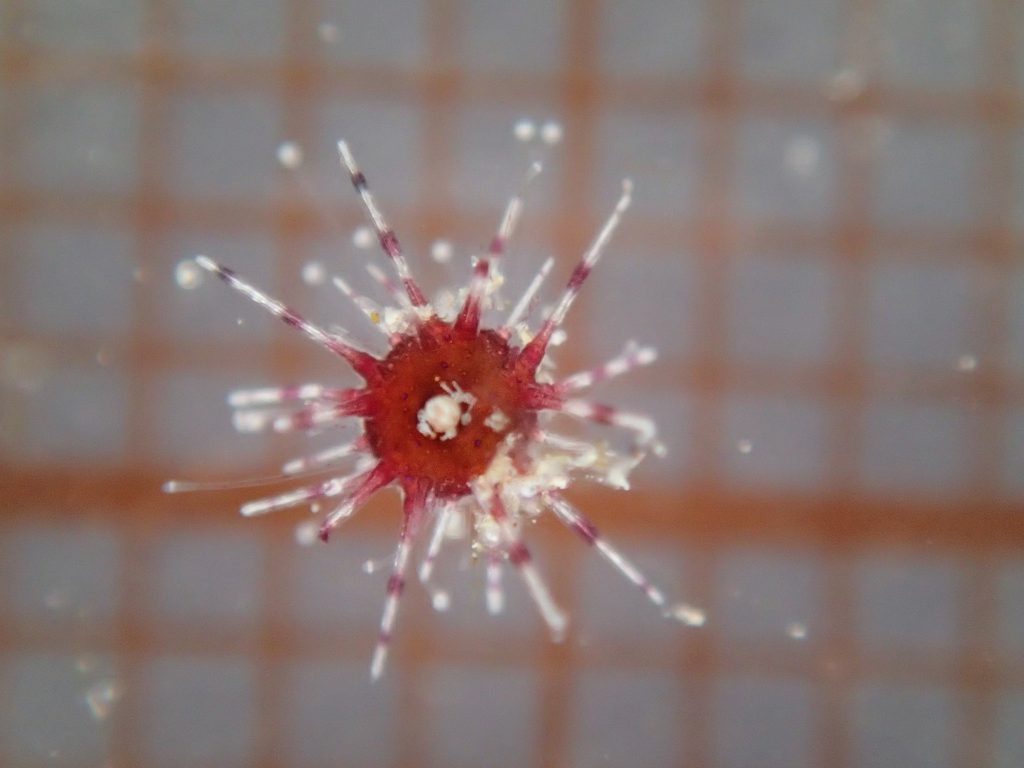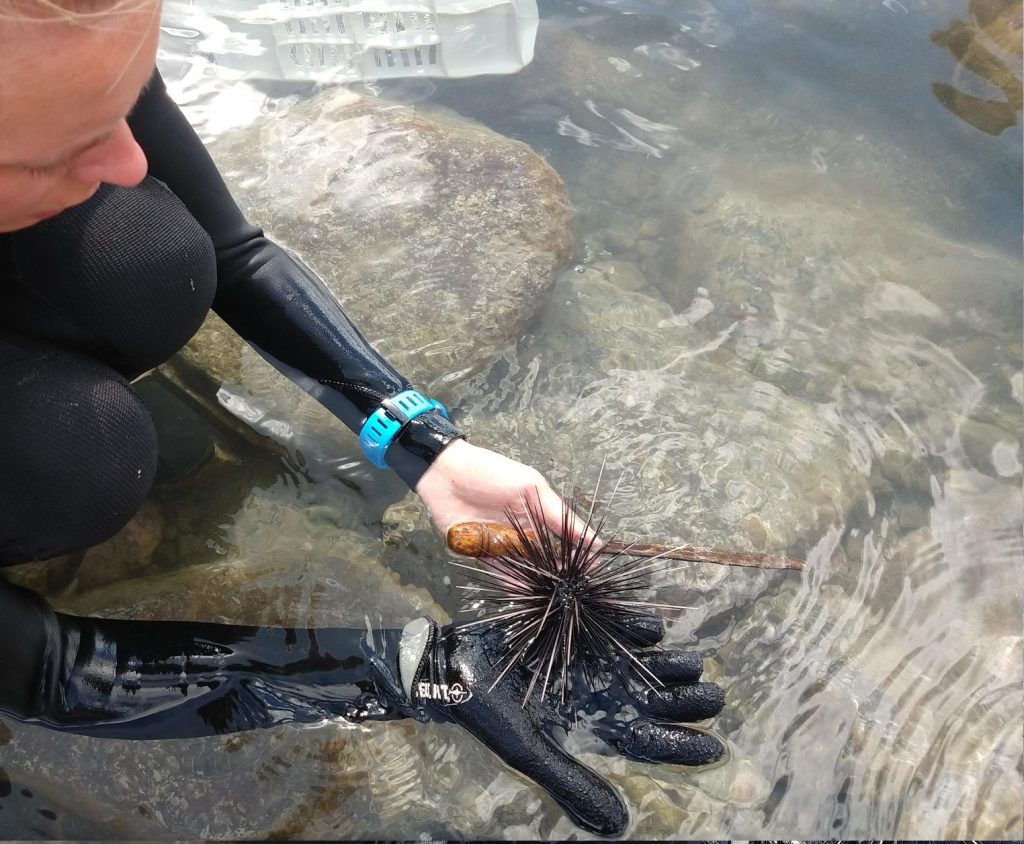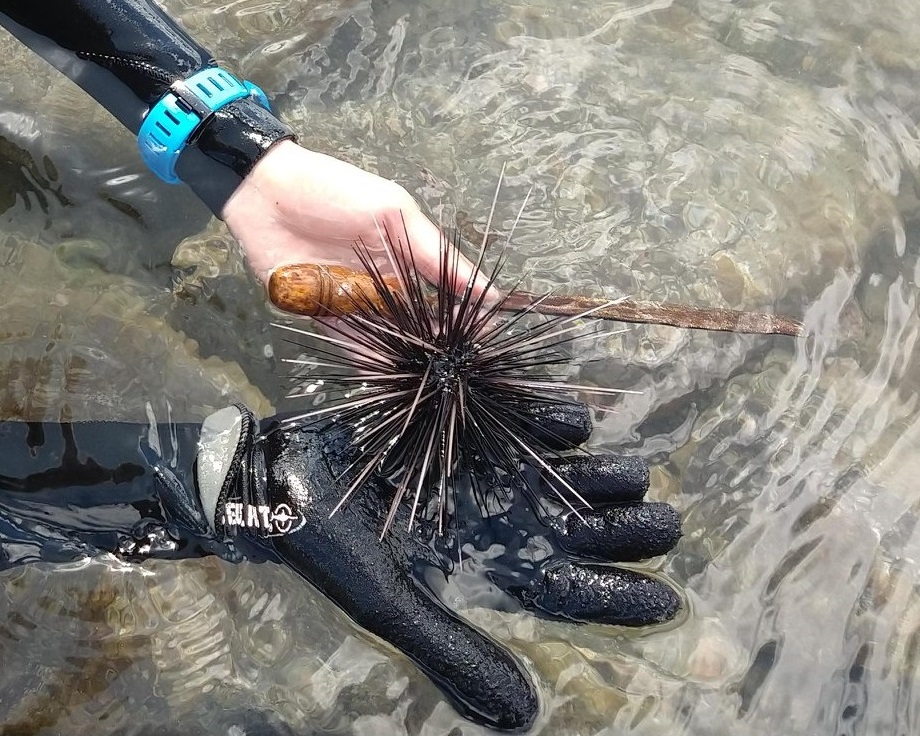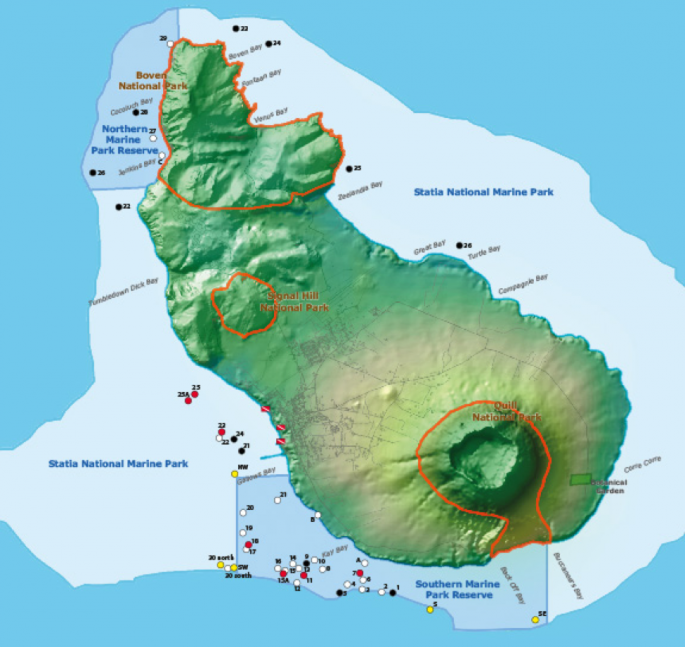The new RAAK PRO Diadema project aims to restore the population of the long-spined sea urchin populations (Diadema sp) on the coral reefs around Saba and St. Eustatius. This particular urchin was once the most important herbivores on Caribbean coral reefs until more than 95% of the sea urchins died in 1983, due to an unknown disease. Without their grazing, the algae flourished which then smothered the corals as well as prevented baby corals from finding clear surfaces to start growing on. This created changed the coral reef to algal beds. More than 35 years later, these long-spined sea urchins are still very rare and only sometimes abundant in shallow waters, such as harbours. They are seldom seen on the deeper coral reef.
♦
Worldwide, coral reefs face many threats that are difficult to tackle locally, such as global warming and ocean water becoming more and more acidic due to absorption of carbon dioxide. This makes it even more urgent to remove as many local threats as possible. Increasing the number of sea-urchins to numbers that existed before die-off will successfully remove the overgrowing algae and will make the reefs more resilient to the other threats they face. To do this, University of Applied Sciences Van Hall Larenstein, St. Eustatius National Parks Foundation, Saba Conservation Foundation, Wageningen Marine Research, Wageningen University, Caribbean Netherlands Science Institute, University of Applied Sciences HZ, ISER Caribe, Wortel Product Design and Golden Rock Dive Center work together in the new RAAK PRO Diadema project. The project is partly funded by the Dutch Organization for Scientific Research (NWO) and will run for four years, starting this September.
♦
The first step to be taken by this team will be to find out why the populations on most reefs have not recovered. Initial tests have found a high abundance of very small juvenile sea urchins. Adult long-spined sea urchins were, however, absent on the reefs. The presence of these juveniles makes one thing clear, that there is potential for the population to recover as needed. The research will, therefore, focus on the early stages in the life cycle of these sea urchins. The ultimate goal is to develop a new method to maximize settlement and survival of larvae and juveniles and, by doing this, restore the populations of this important herbivore. The sea urchins will, once more, graze away the algae and aid in the recovery of Saba’s and Statia’s coral reefs.
♦

First-stage in the life cycle of the long-spined sea urchin. 
Marine Park Ranger Marit Pistor holding a long-spined urchin (Diadema antillarum).




